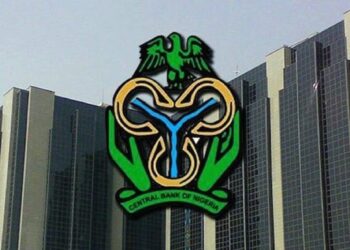The Central Bank of Nigeria (CBN) has reported a continued increase in borrowing costs and a decline in growth within the banking industry. Deputy Governor Aishah Ahmad, in her statement during the recent Monetary Policy Committee (MPC) meeting, highlighted the need to sustain lending to critical sectors of the economy while tightening monetary policy to combat inflation. Despite an increase in industry credit and the CBN’s efforts to provide affordable finance to key sectors, lending rates remain high, leading to slowed credit growth. This article examines the implications of these developments and emphasizes the importance of balanced actions to achieve price stability.
Rising Borrowing Costs and Slowed Credit Growth
Ahmad noted that borrowing costs have risen due to the positive correlation between market lending rates and the Monetary Policy Rate (MPR), which was recently increased from 18.0% to 18.5%. The growth in credit has consequently slowed down, with credit growth declining from 1.31% in March 2023 to 0.05% in April 2023, despite an increase of N4.54tn in industry credit between April 2022 and 2023. The contractionary monetary policy stance has contributed to the high lending rates, underscoring the need for balanced actions to achieve the CBN’s price stability mandate.
CBN’s Efforts to Support Access to Affordable Finance
The CBN has implemented intervention loans targeting selected industries and Small and Medium Enterprises (SMEs) at single-digit interest rates. These initiatives aim to stabilize access to affordable finance for sectors that generate employment opportunities. By providing access to low-cost financing, the CBN seeks to stimulate output growth, bolster cash flows for businesses, minimize default risks, and preserve financial stability. These measures are expected to have positive implications for the macroeconomy and promote sustainable growth.
Resilient Banking Sector Indicators
Amidst the challenges, the soundness indicators of the Nigerian banking industry remained strong as of April 2023. The capital adequacy ratio stood at 12.8%, exceeding the minimum requirement, while the non-performing loans ratio decreased to 4.4% from 5.3% in April 2022. Furthermore, the liquidity ratio was reported at 45.3%, surpassing the minimum threshold of 30.0%. These indicators demonstrate the resilience of the banking sector in maintaining financial stability, even as credit to the real sector continued to grow.
Bottom Line
The Nigerian banking industry is grappling with rising borrowing costs and a decline in credit growth, primarily influenced by the tightening monetary policy stance. However, the CBN’s interventions targeting selected sectors and SMEs aim to mitigate the impact by providing access to affordable finance. Achieving a balance between price stability and supporting economic growth becomes crucial. The soundness indicators of the banking sector indicate its resilience in the face of these challenges. By implementing strategic measures, such as maintaining adequate capital ratios and managing non-performing loans, the sector can navigate through the current environment and continue to contribute to the nation’s economic stability.










